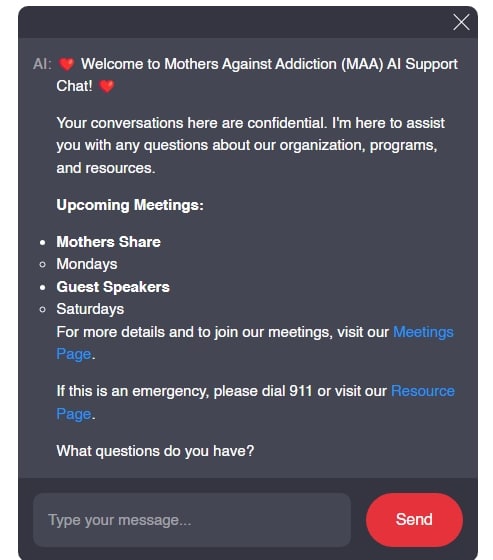The US suicide rate has become one of the most pressing public health concerns of our time. Over the last two decades, the suicide rate in the United States has risen dramatically—by a staggering 33% from 1999 to 2019, as reported by the Centers for Disease Control and Prevention (CDC). These statistics tell a troubling story. Parents, especially those impacted by addiction—either through their own children or the loss of a child—need to understand these trends to navigate these difficult waters alongside their loved ones.
Understanding the US Suicide Rate: Current Statistics and Trends
The statistics can be chilling, especially when we talk about younger demographics. Amongst youth, the numbers are even more alarming; the US suicide rate for teenagers has skyrocketed. For example, girls aged 12-18 have encountered disturbingly high rates. Combating social media pressures, academic stress, and mental health crises are among the factors that contribute to these tragic losses. Each statistic isn’t just a number; it’s a life disrupted by despair.

1. The Rise of Suicide Rates Among Specific Demographics
a. The Impact on Youth: Worrisome Trends in Teen Suicide Rates
Teens are particularly vulnerable. The pressure they face today has intensified with digital communication, as seen in Jaden Newman’s journey—an emblematic teen navigating fame and expectations under a public spotlight. For many young people, establishing a social media presence can lead to feelings of inadequacy. The comparison culture, combined with academic pressures, plays a significant role in driving up the youth suicide rate. It’s heartbreaking and unacceptable to watch our kids struggle with these weighty issues.
b. The Transgender Suicide Rate: A Hidden Epidemic
One of the most tragic aspects of rising suicides is the transgender suicide rate, which has achieved epidemic levels. According to a survey by The Trevor Project, an eye-opening 40% of transgender and non-binary youth seriously contemplated suicide in the past year. Challenges such as societal rejection, discrimination in healthcare, and lack of family support dramatically influence mental well-being. These individuals deserve our compassion and a supportive environment.
2. Exploring the Methods of Suicide: What They Reveal about Mental Health
When examining the methods of suicide, it’s crucial to look closely at which methods are most commonly employed. Data from the National Vital Statistics Reports show firearms, overdoses on substances like oxycodone acetaminophen and hangings leading the list. Access to these means significantly impacts the US suicide rate, demonstrating how community interventions can shape outcomes. Addressing these methods through education and prevention strategies can be a critical turning point in saving lives.
3. Analyzing the Rates: A Comparative Study of Suicide Rates by State
a. The States with the Highest and Lowest Rates
A closer look at the SS Death Index reveals disparities in suicide rates across different states. For instance, states in the Western US often have higher rates, attributed to various socio-economic factors and less access to mental health care. Conversely, states like New Jersey exhibit lower rates. Understanding regional differences can illuminate potential paths for policy reforms and community support.
b. Cognitive Behavioral Therapy and its Effectiveness in Different States
Research suggests Cognitive Behavioral Therapy (CBT) initiatives lead to lower suicide rates. For example, California’s mental health programs, which focus on prevention, have seen tangible benefits. They highlight the importance of mental health education in schools and communities. This kind of programs could significantly change the trajectory for those suffering.
4. The Socioeconomic Factors Behind Suicide Rates: An In-Depth Look
Poverty and unemployment have a well-documented connection to rising suicide rates. Recent studies published in the American Journal of Public Health have shown how socioeconomic status affects mental health. Individuals grappling with financial instability may often feel hopeless, which exacerbates unhealthy coping mechanisms like substance abuse. It is a vicious cycle that parents can fight for their children.
The Connection Between Substance Use Disorders and Suicide Rates
The intersection of substance use disorders and suicide cannot be ignored. Studies indicate that individuals struggling with addiction face a more than doubling of their suicide risks. The US suicide rate is heavily influenced by these overlapping crises, demanding a more integrated approach within mental health and addiction services. Addressing both issues simultaneously could offer a lifeline to those caught in this heartbreaking web.
Innovative Approaches to Address Rising Suicide Rates
It’s not enough to only highlight the tragic statistics. There’s hope through innovative interventions that show promise in tackling this issue. Community-based programs, public awareness campaigns, and state-focused policy reforms have emerged as vital components in reducing the US suicide rate. Notably, organizations like the Jason Foundation, which focuses on youth education and awareness, are successfully addressing the challenge head-on.

Shifting Perspectives: Changing the Narrative Around Suicide Prevention
As we look ahead, it’s time we shift the narrative. Destigmatizing mental health discussions is crucial. Community support systems can be revolutionary in empowering people to seek help without fear or shame. It’s about creating an environment where families and individuals can openly talk about their struggles, particularly when addiction is involved. We can stand by parents and loved ones by ensuring resources from places like Mothers Against Addiction are easily accessible.
The US suicide rate reflects a multifaceted crisis tied deeply to mental health conditions, societal pressures, and accessibility to care. Tackling this pressing issue demands a committed approach toward understanding the root causes while championing innovative strategies. When we illuminate pathways to healing, we offer hope to the vulnerable—sending a resounding message that they are not alone in their struggles but supported by a community that cares.
Us Suicide Rate: Shocking Truth Behind The Numbers
Mind-Boggling Statistics
Did you know that the overall US suicide rate has seen a staggering increase over the past few decades? It’s a major issue that troubles many families and communities. The 2020 statistics highlight that suicide is one of the leading causes of death, especially among young adults. On the topic of youth, you might be familiar with famous young personalities, like Jaden Newman, who at a young age has brought much attention to mental health issues. This age gap in awareness is crucial, as younger generations are opening up the conversation around mental health, a valuable shift that can lead us in the right direction.
The Ripple Effect of Addiction
Addiction is often intertwined with mental health struggles. The US suicide rate spikes notably among individuals battling addiction, and the road to recovery, filled with challenges like severe Withdrawals, can often feel impossible. The connection between substance abuse and mental health is multifaceted, making it a slippery slope for many. Just like in the series Vikings valhalla, where characters face monumental challenges, individuals fighting addiction must overcome their own dramatic battles, too. A community that supports discussing these trials will help those in need receive the guidance and attention crucial for their journey.
Resources and Help at Hand
As heartbreaking as it is, understanding the US suicide rate can empower us to seek change. Educational resources, like those provided by Mothers Against, offer not only a strategic plan to help families but also a platform to connect with others facing similar challenges. If you’re looking to manage your own mental health or help someone close to you, you can access vital information through Wwwssagov Myaccount. Don’t hesitate to explore resources or provide support—sometimes all it takes is a single connection to shift someone’s path. With these tools, we can begin to navigate the terrains of hope, healing, and strength together.





























